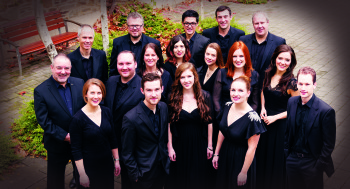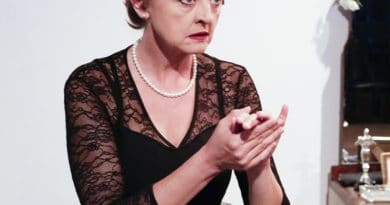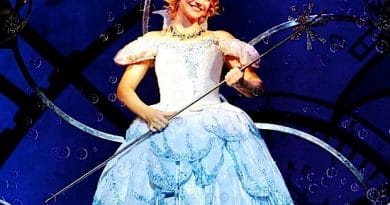Adelaide Festival: Late Night in the Cathedral: Passio

Arvo Pärt is one of the most enduring revolutionary composers of choral and instrumental music of the 20th century. Carl Crossin has been a major influence in the presentation and acceptance of Pärt’s choral music in particular in Adelaide. His Adelaide Chamber Singers is one of the most accomplished choirs in Australia. This combination held an enthralled capacity audience in the magnificent ambience and acoustic of St Peter’s Cathedral entranced in a spine-tingling and mesmerising performance of Passio Domini Nostri Jesu Christi Secundum Johannes: Arvo Pärt’s St. John Passion, sung in Latin, with translation on screens on each side of the choir.
From the dramatic and anguished opening chord announcing Passio, it was clear we were in for a choral treat. The music is an inventive and fascinating complex of modes and idiosyncratic, deeply spiritual, ascetic minimalism. Any initial unfamiliarity with the harmonic structure soon disappears as the work progresses and the internal logic of it becomes increasingly apparent: dark, yes, and austere, but intensely expressive and involving. Chorally demanding, it was made to sound easy by the accomplished Chamber Singers, and the masterful control and clearly deep understanding of Carl Crossin’s direction.
An ensemble of violin (Elizabeth Layton), Oboe (Celia Craig), Bassoon (Mark Gaydon),and ‘Cello (Simon Cobcroft) with Josh van Konkelenberg at the Organ accompanied parts, left others a capella, and neatly punctuated the many short clauses of the narration.
[pull_left]The music is an inventive and fascinating complex of modes and idiosyncratic, deeply spiritual, ascetic minimalism[/pull_left]
The words of Jesus in long, calm, notes were sung in serene style by Alexander Knight, who entered up the aisle in a simple alb. His rich, straight baritone was perfectly suited to this contemplative, moving role. The role of the Evangelist and other minor protagonists was shared by members of the choir in changing groups of varying numbers from a single soloist to four, five, seven or more, demonstrating the uniform quality of the individual members, each of whom is clearly capable of being a soloist in their own right. The more agitated role of Pilate was equally well sung by Tenor Richard Butler in a plain red cassock, conveying Pilate’s confusion and anxiety, giving way to weakness.
The narrative with its contemplative plainsong-like phrases and repetitive harmonies, and commentary from the crowd require great precision in entries and cut-offs, and clarity and determination in sustaining the semi-tones which frequently end the phrases, all of which Crossin and the choir achieved expertly yet apparently effortlessly. A very nice feature of the entire performance was the pleasing absence of distracting vibratos in soloists and choir alike, which enables the purity and intertwining lines of the music and the modal changes from chorus to Jesus to Pilate and back to be fully appreciated.
Then comes the murderous cry, “Crucify him!”, and a new level of passion and vigour is unveiled. Then the dramatic change to unison in the choir to tell how Jesus “bowed his head and gave up the ghost”. The work finishes with a triumphant change into the familiarity of a major key for the final epilogue: “You who have suffered for us, have mercy on us. Amen”.
For a challenge, an uplifting experience and a fine demonstration of why the composer has secured a place in the history of music, don’t miss this remarkable performance by an ensemble of which Adelaide can be very proud.


